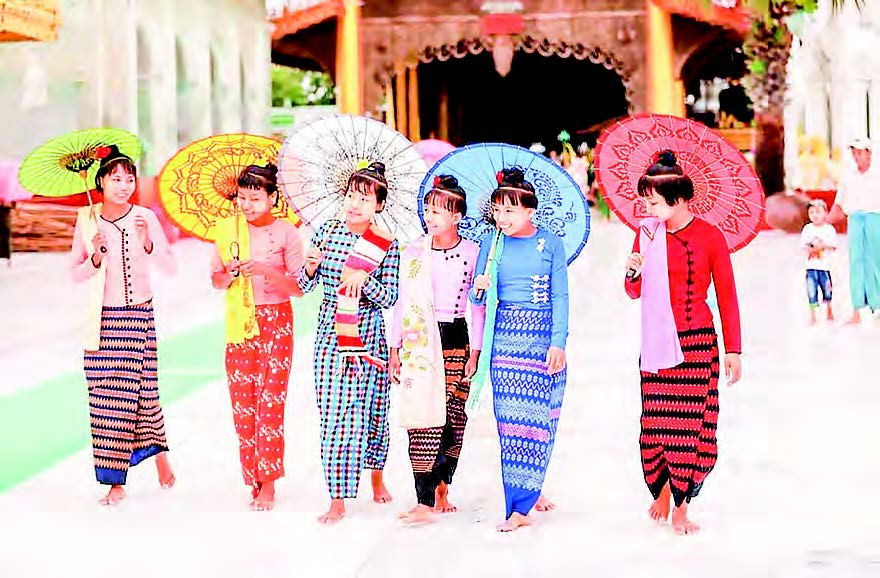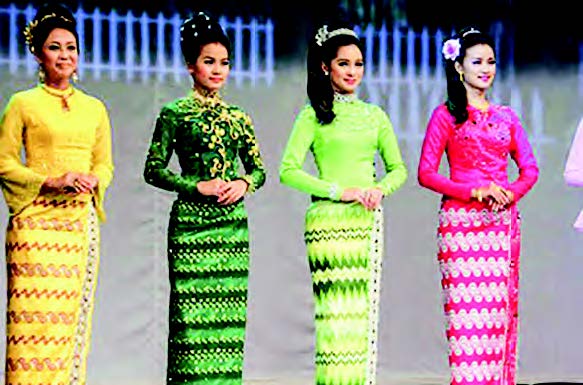Zeyar Naing (Shwe Kan Myay)
MYANMAR women have preserved the noble traditions and customs from generation to generation. The efforts of these women in safeguarding such traditions are also prominently reflected in the literature that emerged across different eras.
According to the 2014 Myanmar Population and Housing Census, number of women accounted for approximately 29.4 million out of the total population of around 56.2 million, indicating that more than half of the country’s population is women. Being a Union made up of over 100 different ethnic groups, Myanmar is home to a wide diversity of traditional cultures, customs, languages, dress, historical backgrounds, and geographical features.
In the present day, Myanmar women not only shoulder the traditional role of household responsibilities, but also keep abreast with men in contributing to both personal and social progress. As women are considered a vulnerable group, it is essential to protect and nurture their lives, ensuring their well-being and empowerment. At the same time, their rights and livelihoods must be safeguarded and promoted, particularly in the areas of education, healthcare, economy, social development, and overall security for young women. Women themselves must also strive to preserve and uphold the dignity and value of womanhood.
An important aspect for Myanmar women is the preservation of their ethnic traditions, cultural customs, national pride, and dignity. These values must be safeguarded to ensure that they are neither diminished nor lost. Therefore, it is essential to continuously foster a mindset that cherishes and values the lives of women, promoting a spirit of respect, pride, and cultural identity throughout their lives. Myanmar people should know their tradition and culture and should not value others’ cultures while preserving their tradition and culture, and this includes traditional dress and customs.
Myanmar girls and women wore traditional garments such as Yin Phone and longyi, following the attitudes of their parents. They gracefully wear Myanmar traditional dress at religious events, pagoda festivals and donation events. However, some young people may be considered reckless for wearing skirts, shorts and long pants in ways that may damage Myanmar culture.
Myanmar women are the rising stars of the future, and they should wear safe and fine dresses as they are living in a country with the proclamation of Buddhism. Moreover, they can be known as Myanmar by the tourists whenever they see them wearing a Myanmar dress.
Myanmar girls serve as role models in preserving traditional cultural heritage by wearing Yin Phone and longyi. Naturally calm and composed, Myanmar women are also known for their gentle and graceful demeanour, which contributes to their dignified feminine charm.
Therefore, from major cities to rural areas, Myanmar’s traditional cultural heritage should be preserved. The beauty of traditional attire and customs, which deserves to be honoured as a form of cultural art, should be portrayed by artists as a masterpiece delicately painted with the skilled brushstrokes of Myanmar culture.
Just as Myanmar women rightfully possess the tradition of wearing cultural attire, they should also uphold modesty and a sense of decency in how they dress. Their clothing should be neither too plain nor overly extravagant, neither outdated nor excessively modern. By wearing traditional Myanmar dress, which is most pleasing to the eye, heartwarming to the soul, and rich in elegance and dignity, they help preserve the beauty and cultural heritage of Myanmar women today and pass it down as a cherished legacy to future generations of young girls. This article is created in honour of the Myanmar Women’s Day, which will fall on 3 July 2025.
Translated by KTZH



